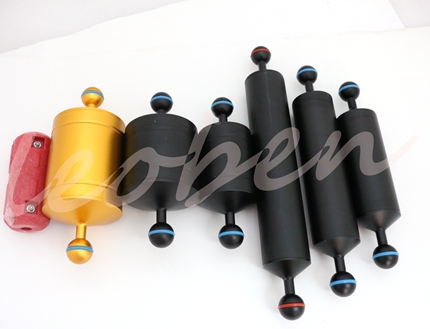- All
- Product Name
- Product Keyword
- Product Model
- Product Summary
- Product Description
- Multi Field Search
Views: 20 Author: Site Editor Publish Time: 2016-04-26 Origin: Site

Underwater Photography Mistakes
Not Having Good Buoyancy Control: Having good buoyancy control is the first and foremost skill necessary for good photography. Fast jerky movements through the water scares fish away, makes your camera move causing blurred images, silts the bottom causing backscatter in your photos and is just plain bad diving technique.

Using Your Hands to Guide You (Sculling): Many divers have reasonable good buoyancy control but try to fine tune their position in the water by moving their hands. This is known as “sculling.” It is not only poor diving technique but the water movement scares the fish and creates water movement that chases away other photographic subjects such as plume worms and Christmas tree worms.
Being Too Far from your Subject: Water absorbs the suns rays very quickly. Consequently color is lost at depth. If you take your photos from three to four feet from you subject you will be able to use the internal flash on your camera to bring out the best color of your photographic subject. Further than four feet and your photos will most likely come out in a monochromatic blue and white.
Opening your Camera Housing on the Boat: You should always seal your camera into its housing, while you are still in your hotel room. Most hotel rooms are air conditioned, which is low on humidity and puts less moisture in the housing when you seal it. If you open the housing on the boat there is a lot of humidity in the air and you seal that in the housing when you close it. Humidity in the housing will cause your camera lens to fog in the water, dulling your photographs.

Not Anticipating the Digital Delay: Most digital cameras have a slight delay in taking the picture from when you press the shutter release, often resulting in a late photo. You need to realize this and snap that photo a second or two earlier then you normally would so that the fish is not out of position and you will achieve far better results.
Using too Much O Ring Grease: The purpose of silicone or O ring grease is to lubricate the O ring and keep it from drying out. Too much silicone will actually cause the housing to flood. It will grab sand and silt and it gets pushed into the O ring causing leaks. Some underwater camera housing manufacturers do not advocate using any O ring lubricant at all. Read your owners manual to find out what your camera needs.
Not Pretecting Your Camera Housing: When you first buy your new underwater camera you should test the housing seal in a bathtub. Don’t assume just because it is new that it does not leak. When you get on the dive boat it is also a good idea to put the housing in the camera rinse tank and look for leaks prior to each dive. If it does leak you will see the bubbles and can remove it immediately. Also the rinse tank is fresh water, which is far less harmful then salt water.
Jumping into the Water with your Camera: Many divers think it is a macho thing to be able to jump into the water with your camera. There is nothing macho about it – it is just plain stupid. Your camera O rings are designed for static pressure. Jumping causes jarring or dynamic pressure which will cause your camera housing to leak. Always hand your camera down to someone or have them hand it down to you. Always hand your camera up to someone rather then trying to climb out with it in your hands. If you do not have someone to help, tie your camera to a line and lower it into the water before you get in.